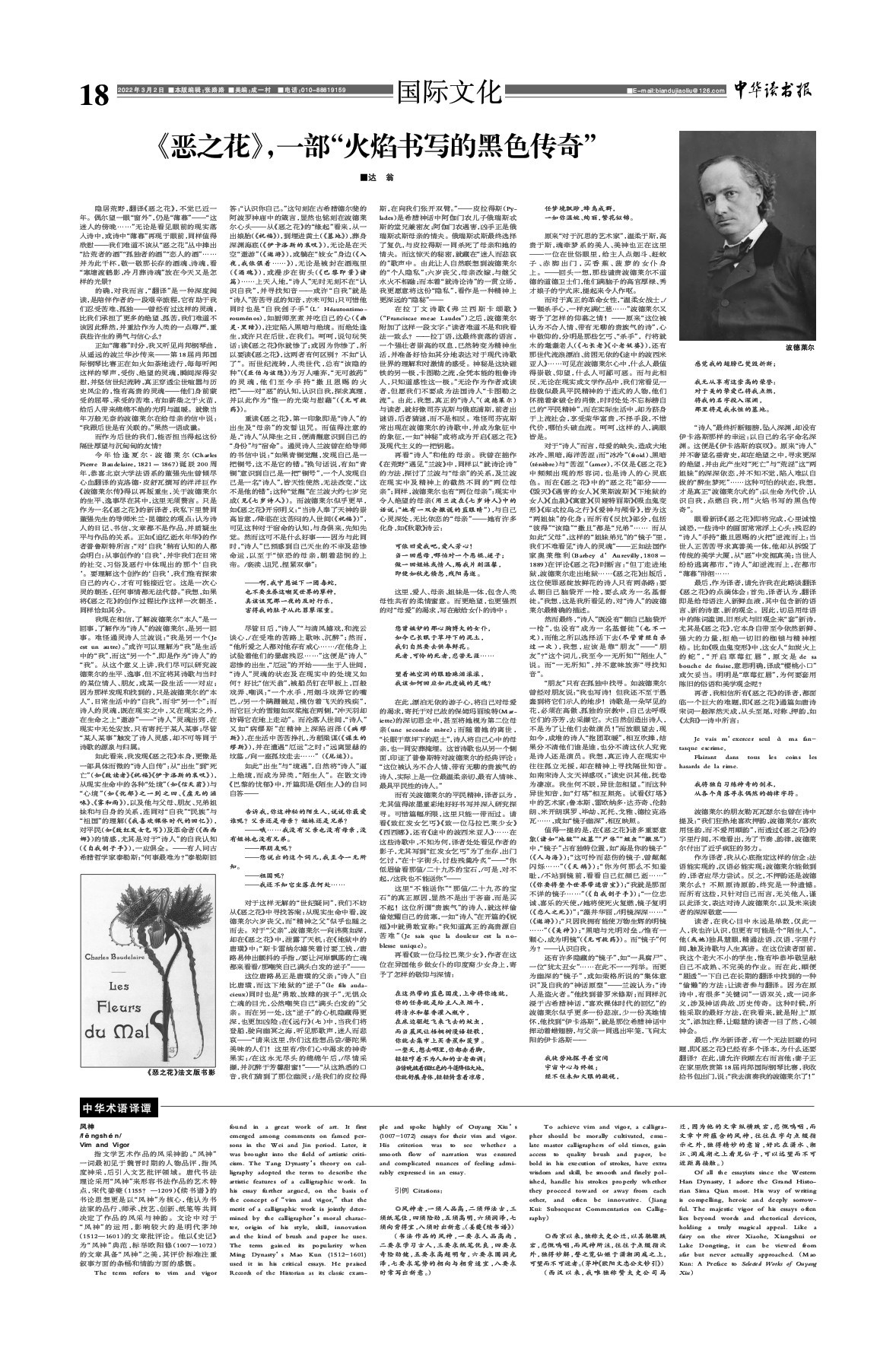风神/fēngshén/Vim and Vigor
指文学艺术作品的风采神韵。“风神”一词最初见于魏晋时期的人物品评,指风度神采,后引入文艺批评领域。唐代书法理论采用“风神”来形容书法作品的艺术特点,宋代姜夔(1155? —1209)《续书谱》的书论思想更是以“风神”为核心,他认为书法家的品行、师承、技艺、创新、纸笔等共同决定了作品的风采与神韵。文论中对于“风神”的运用,影响较大的是明代茅坤(1512—1601)的文章批评论。他以《史记》为“风神”典范,标举欧阳修(1007—1072)的文章具备“风神”之美,其评价标准注重叙事方面的条畅和情韵方面的感慨。
Theterm refers to vim and vigorfound in a great work of art. It first emerged among comments on famed per⁃sons in the Wei and Jin period. Later, it was brought into the field of artistic criti⁃cism. The Tang Dynasty’s theory on cal⁃ligraphy adopted the term to describe the artistic features of a calligraphic work. In his essay further argued, on the basis of the concept of“vim and vigor,”that the merit of a calligraphic work is jointly deter⁃mined by the calligrapher’s moral charac⁃ter, origin of his style, skill, innovation and the kind of brush and paper he uses.The term gained its popularity when Ming Dynasty’s Mao Kun (1512-1601)used it in his critical essays. He praised Records of the Historian as its classic exam⁃ple and spoke highly of Ouyang Xiu’s(1007-1072) essays for their vim and vigor.Hiscriterion was to see whether a smooth flow of narration was ensured and complicated nuances of feeling admi⁃rably expressed in an essay.
引例 Citations:
◎风神者,一须人品高,二须师法古,三须纸笔佳,四须险劲,五须高明,六须润泽,七须向背得宜,八须时出新意。(姜夔《续书谱》)
(书法作品的风神,一要求人品高尚,二要求学习古人,三要求纸笔优良,四要求奇险劲健,五要求高超明智,六要求圆润光泽,七要求笔势的相向与相背适宜,八要求时常写出新意。)
To achieve vim and vigor,a calligra⁃pher should be morally cultivated, emu⁃late master calligraphers of old times, gain access to quality brush and paper, be bold in his execution of strokes, have extra wisdom and skill, be smooth and finely pol⁃ished, handle his strokes properly whether they proceed toward or away from each other, and often be innovative. (Jiang Kui: Subsequent Commentaries on Callig⁃raphy)
◎西京以来,独称太史公迁,以其驰骤跌宕,悲慨呜咽,而风神所注,往往于点缀指次外,独得妙解,譬之览仙姬于潇湘洞庭之上,可望而不可近者。(茅坤《欧阳文忠公文钞引》)
(西汉以来,我唯独称赞太史公司马迁,因为他的文章纵横跌宕,悲慨呜咽,而文章中所蕴含的风神,往往在字句点缀指示之外,独得精妙的意旨,好比在潇水、湘江、洞庭湖之上看见仙子,可以远望而不可近距离接触。)
Of all the essayists since the Western Han Dynasty, I adore the Grand Histo⁃rian Sima Qian most. His way of writing is compelling, heroic and deeply sorrow⁃ful. The majestic vigor of his essays often lies beyond words and rhetorical devices,holdinga truly magical appeal. Like a fairy on the river Xiaohe, Xiangshui or Lake Dongting, it can be viewed from afar but never actually approached. (Mao Kun: A Preface to Selected Works of Ouyang Xiu)



 上一版
上一版


 缩小
缩小 全文复制
全文复制 上一篇
上一篇